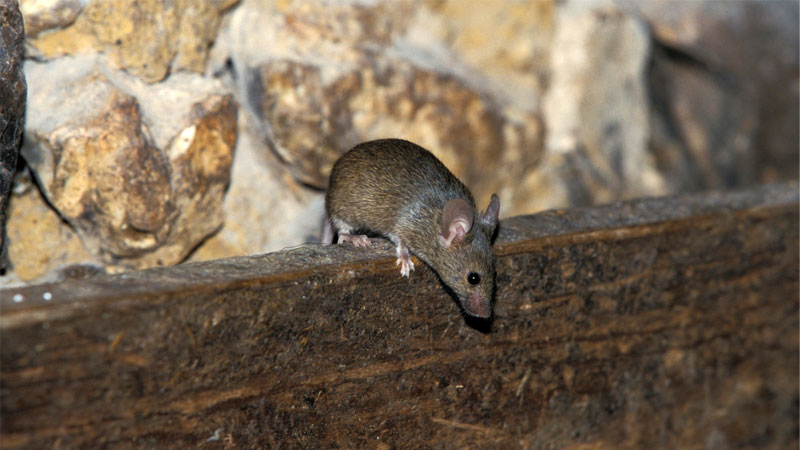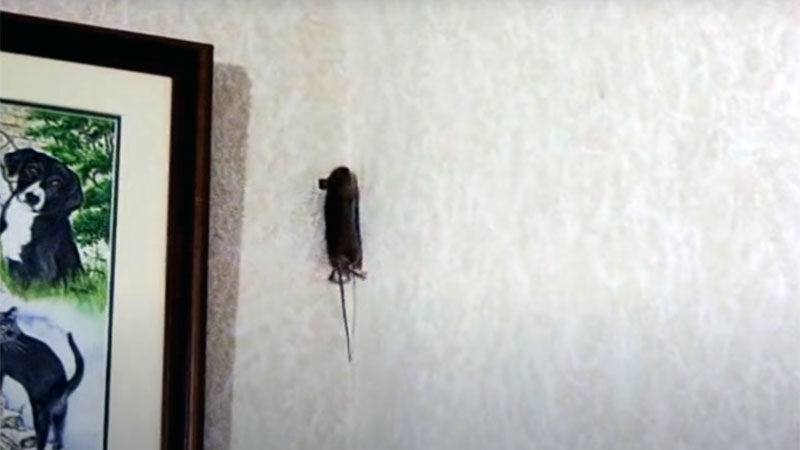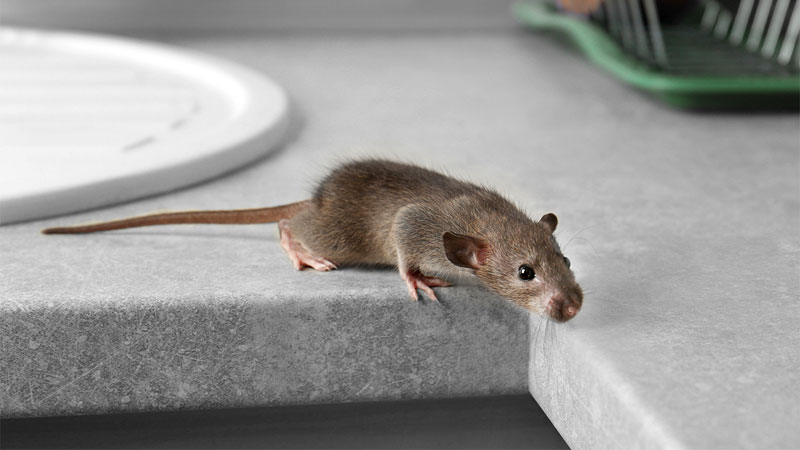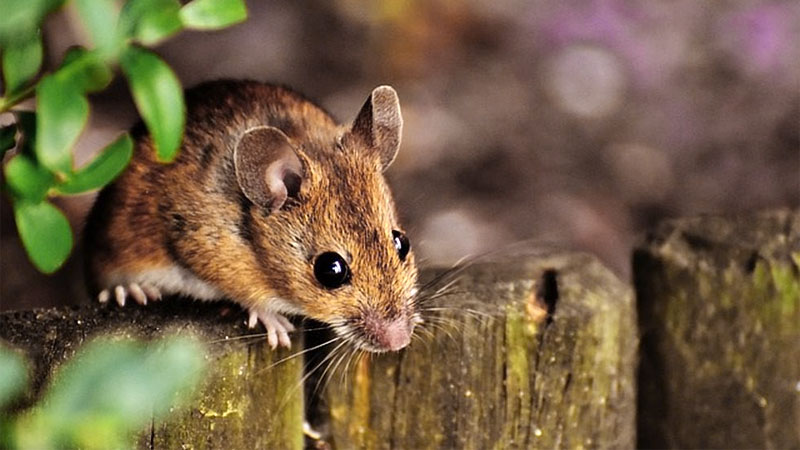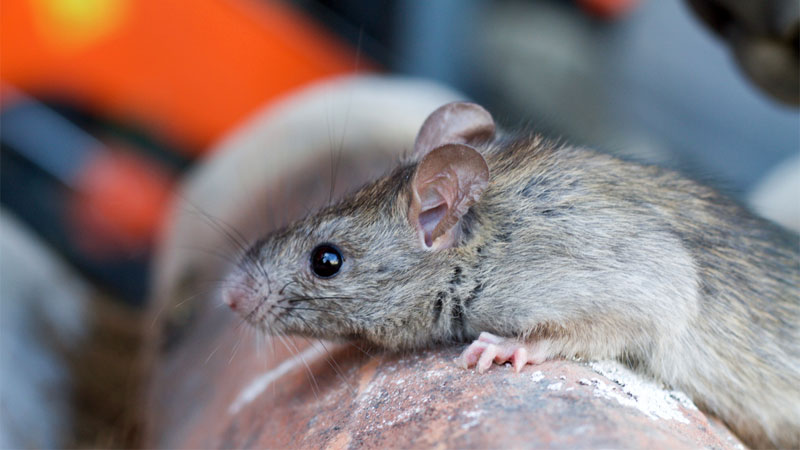Mice are an extremely adaptable and intelligent race. This has allowed them to study humans for millennia. But a mouse’s body is far more agile than you may give them credit for, and humans are often surprised to see a mouse bolting up vertical surfaces with surprising grace.
Just because we owe our planet’s existence to the philosophical curiosity of mice doesn’t mean we want them in our homes. The fact that they can scale some surfaces can make trapping them difficult if you don’t know where they can go to hide.
If you have a genuine fear of mice, you may want to stop reading. For everyone else, here’s all you need to know about a mouse’s (and in most cases, a rat’s) ability to climb.
Related: Can Bed Bugs Climb?
How Do Mice Climb?
Mice are incredibly flexible and have a lot of muscle hidden under their fur. Their large hind feet make them excellent jumpers, the tail provides superior balance, and their front paws have surprisingly dexterous digits.
One thing you might not even notice if you’ve never held any type of mouse is the fact that their front paws are very similar to human hands. This includes functional fingers with claw fingertips. Most rodents have a better grip than cats due to this design detail. And this gives them an edge against many vertical surfaces.
Surfaces often have a mildly rough surface texture that we might not see but are similar to grips on a rock climbing wall for mice. They’re able to grip these surfaces and sometimes dig in with their claws for extra stability. As a result, they can scurry up some surfaces almost as fast as they can bolt across a floor.
See Also: Can Garter Snakes Climb Stairs or Walls?
What Surfaces Can a Mouse Climb?
Now that you know how mice can climb vertically, it’s important to know what surfaces they can actually climb. Here are some common surfaces people aren’t sure about:
Can Mice Climb Walls?
Most interior and exterior walls can be scaled by a mouse. Some of the easiest surfaces include stone, brick, stucco, drywall, wood, and plaster. Painted surfaces tend to be more slippery, making it difficult for a mouse to scale, but not impossible.
Can Mice Climb Ceilings?
This is one of those “yes and no” questions. Because a ceiling is usually horizontal (with a few notable exceptions), the average mouse is unlikely to try and traverse it. When that surface is wood, they’re far more likely to try than if it’s drywall or some other common surface.
The rules change if the mouse is INSIDE the ceiling. In such a case, they will likely scurry along the ceiling with very little effort.
Related: How to Get Rid of Dead Mouse Smell From Walls and Ceilings
Can Mice Climb Down Chimneys?
Chimneys are generally made of brick, which is a heavily textured surface. This makes it incredibly easy for mice to scale. However, modern metal chimneys can be far more difficult for a mouse to climb due to the smoother surface.
It’s a simple matter to add exclusionary caps to the chimney to limit access.
Can Mice Climb Onto Kitchen Counters?
You may be thinking that there’s no way a mouse could climb up onto a kitchen countertop. But you’d be wrong. Sure, it may be tough or even impossible to scale the front side of kitchen drawers and cabinets (especially when the countertop has an overhang), but mice are resourceful critters. This is especially true when there are potential food sources nearby.
As already mentioned, mice can climb walls so oftentimes, it’s a simple transition to the counter. They can even climb cables or onto nearby objects and then use their jumping ability to make it the last few inches onto the countertop.
Read Also: How to Set a Mouse Trap Without Snapping Your Fingers
Can Mice Climb Into Your Bed or Onto Other Furniture?
Hickory dickory dock, yes the mouse can scale a clock. In fact, almost any wooden furniture such as cabinets, dressers, countertop spaces with wood siding, tables, etc.
They can also easily climb any upholstered surface. This includes your bed, hamper, couch, or recliner.
See Also: 9 Mouse Repellents That Actually Work
Can Mice Climb Stairs?
Stairs are one of the easiest surfaces for a mouse to climb. Most of the materials used in stair risers are textured, allowing the mouse to scramble up with little effort.
In the case of stairs that lack risers, the height of each step is often low enough that the mouse can simply jump up to the next step.
Can Mice Climb Trees?
This is perhaps one of the original reasons for a mouse’s humanlike hands. As with their cousin, the squirrel, mice scale trees mile they’re horizontal and can even descend upside down with ease.
Mice may prefer nesting in the ground, but they can set up shop in a tree hollow when there’s a risk of predators such as snakes.
Related: Do Snakes Have a Backbone?
Can Mice Climb Vinyl Siding?
Vinyl is a type of plastic, and most plastics are soft enough for mice to dig into. As a result, it’s entirely possible to see a mouse climb the outside of your home of garage.
Other Common Surfaces Mice Can Climb
There are quite a few things and around your home that mice can scale. For example, they can easily grip onto cords and wires. PVC is a form of plastic, allowing mice to travel across or up the sides of PVC pipes.
They can also climb the inside or outside of downspouts more efficiently than any itsy bitsy spider. Finally, keep in mind the fact that mice will usually scale wall cavities where there are wooden beams and insulation to grab onto.
What Surfaces Can Mice NOT Climb?
There are some surfaces a mouse usually cannot scale, although these often have exceptions to the rule.
Can Mice Climb Glass?
Don’t worry, your French doors are quite safe. Glass, unless heavily scratched or damaged, forms one of the smoothest surfaces in your home. Note, however, a mouse CAN climb a curtain or window frame.
Can Mice Climb Metal Surfaces?
Most metals create smooth walls that are difficult for a mouse to climb. As a result, a smooth, finished metal surface is pretty much impossible for the mouse to scale, unless there’s some form of recess or protrusion (such as braces) that give them something they can scale or jump onto.
Making it Harder for Mice to Climb
Whether you’re dealing with an existing mouse infestation or in an area at high risk of infestation, it’s important to thwart climbing mice. Let’s go over some ways to stop mice from climbing, as well as ways to keep them out of your home.
Frustrating Indoor Climbers
House mice are a pain because they’re well-adapted to life among humans. Once they find a potential entry point, they’ll set up base in your walls and gather nesting materials. Unlike in cartoons, you’re not likely to notice some huge mouse hole in the baseboard. Instead, they’ll create small entrances. Often, the first sign of mice will be their fecal matter.
There’s not much you can do to prevent mice from climbing inside vertical walls, but there are a couple tricks to make the outer surface harder to climb. Depending on the type of surface, the most effective way is to spread some petroleum jelly up the first foot or so of the wall or furniture.
This method works great on any type of wood finishing (test a small area first to make sure it won’t discolor, though). It also can be used to prevent other critters like bed bugs from climbing.
Frustrating Outdoor Climbers
Dealing with wild mice that have decided to sneak into your home in search of food is much more difficult. Often, the exterior has vinyl, brick, or concrete walls which are little more than ladders for mice. Beyond exclusionary tactics (which we’ll discuss in a moment), there’s one effective tactic you can try.
Get some smooth metal sheeting. Depending on the species you’re dealing with, a mouse can jump anywhere from nine inches to two feet vertically. You’ll thus want the sheeting to be around two feet tall. Wrap the sheeting around your foundation to create a barrier that the mice can’t get over.
Another important measure is to create a dead zone around your home of at least six inches. You can sprinkle barrier pesticides in this area (be careful if you have pets!). Also, be sure to remove any vines or other plant growth that the mice can use to climb your walls.
Some Simple Exclusionary Tactics
Finally, let’s look at some common exclusionary practices. These are great it your home has brick walls or otherwise can’t stop mice from climbing.
Be sure all of your windows and doors have undamaged silicone caulk. You will also want to look for any openings in walls or the foundation. These openings include vent covers, chimney caps, and areas where pipes enter the building.
Seal these with fine wire mesh to create a simple, yet effective barrier. Some people also like to pack steel wool into cavities before capping to make it mice more reluctant to try breaking in.
Also, keep in mind that mice aren’t the only excellent climbers. Many rats have earned the nickname “roof rats” because they’ll scale your walls and invade the crawl spaces of your attic.
- How to Get Rid of Hawks - March 8, 2024
- How to Get Rid of Pill Bugs (Rolly Pollies) - March 1, 2024
- How to Get Rid of Groundhogs (Woodchucks) - February 5, 2024


